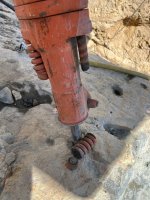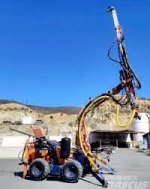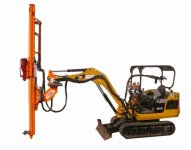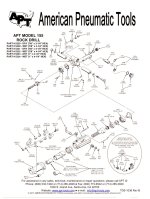I have an APT 155 rock drill i bought second hand. I have some brand new Brunner and Lay bits. (button and cross carbide 1.5”)
I am trying to drill what we call “blue granite” here in Northern ca. Its a VERY tough rock that is almost navy blue with small white quartz specks.
With my drill on full blast, with a brand new button bit as recomended by B&L for hard rock, i got maybe 2” in 30minutes.
It seems like maybe the drill is not hammering as hard as it should? It spins fine, but its just not pulverizing the material.
I can get one hole 20” deep with a 10mm sds plus bit in about 10
mins. The bit is usually toast after 2 holes, sometimes just one…
Anyone with experience drilling rock that appears to be 8 mohs
I just gotta say, the Egyptians must have had some advanced tech because theres no way in heck they quarried stone like this with pounding stones- no way.
I am trying to drill what we call “blue granite” here in Northern ca. Its a VERY tough rock that is almost navy blue with small white quartz specks.
With my drill on full blast, with a brand new button bit as recomended by B&L for hard rock, i got maybe 2” in 30minutes.
It seems like maybe the drill is not hammering as hard as it should? It spins fine, but its just not pulverizing the material.
I can get one hole 20” deep with a 10mm sds plus bit in about 10
mins. The bit is usually toast after 2 holes, sometimes just one…
Anyone with experience drilling rock that appears to be 8 mohs
I just gotta say, the Egyptians must have had some advanced tech because theres no way in heck they quarried stone like this with pounding stones- no way.












